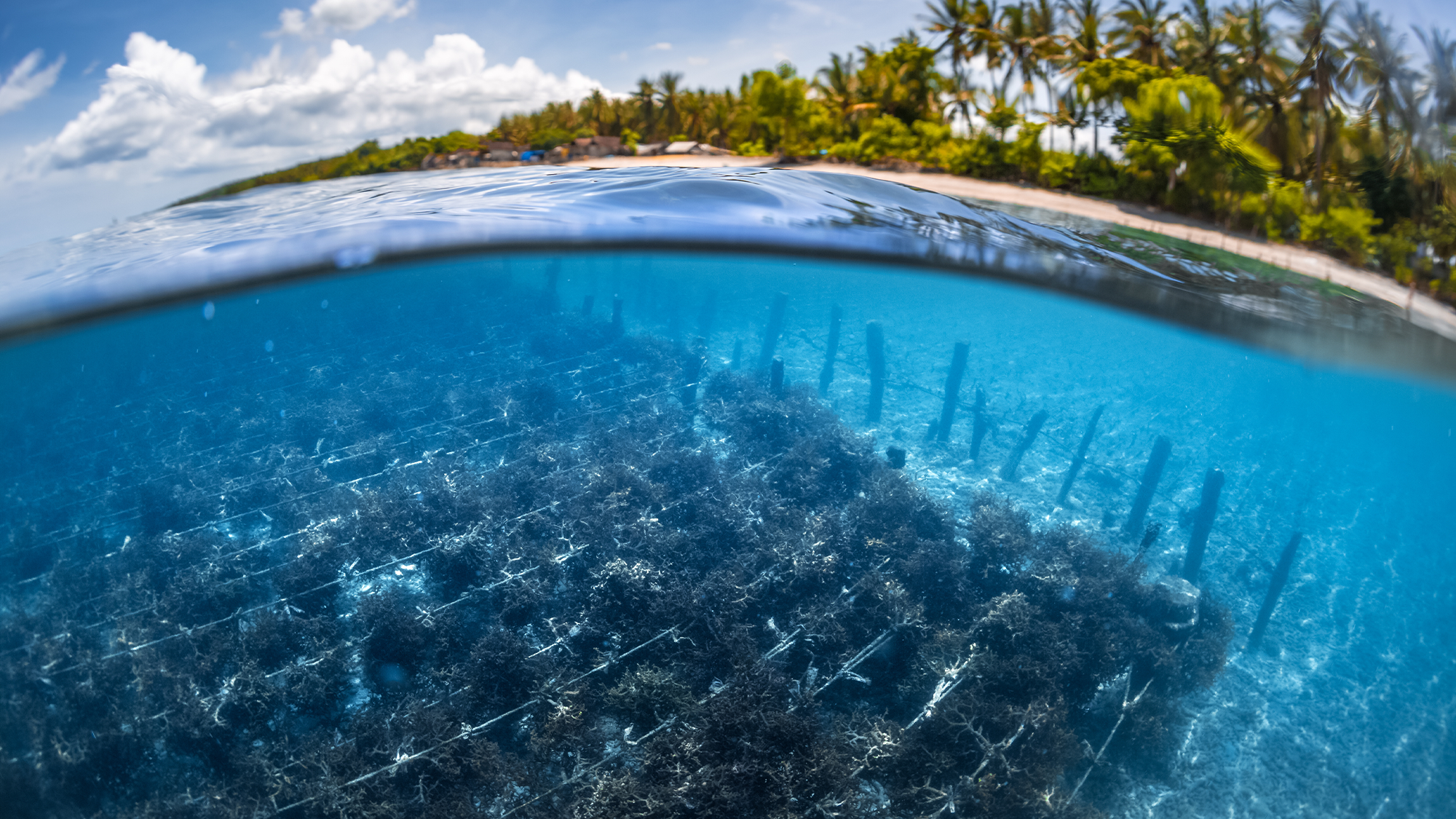

Seaweed is way more than just a slimy plant that feels gross to swim through. It can truly do it all. It’s one of the most abundant plants on the planet, a dietary staple for millions around the world, soaks up carbon, could be used to replace plastics, and is even a more eco-friendly cow feed (more seaweed means less methane in cow farts, according to some research).
More seaweed farming is also a potentially major part of the solution for global food insecurity. A study published January 26 in the journal Nature Sustainability is shedding new light on just how much.
[Related: Why seaweed is a natural fit for replacing certain plastics.]
“Our study found that expanding seaweed farming could help reduce demand for terrestrial crops and reduce global agricultural greenhouse gas emissions (GHG) by up to 2.6 billion tonnes of CO2-equivalent per year,” Scott Spillias, a PhD candidate from the University of Queensland in Australia (UQ) and co-author of the study, said in a statement. “Seaweed has great commercial and environmental potential as a nutritious food and a building block for commercial products including animal feed, plastics, fibers, diesel and ethanol.”
The team used the Global Biosphere Management Model, which assesses competition for land use between agriculture, bioenergy, and forestry, to map out the potential of farming more of the 34 commercially important seaweed species. It also estimated the potential environmental benefits on a range of scenarios based on water and fertilizer use, GHG emissions, changes in land use, and projected changes in species presence by 2050.
“In one scenario where we substituted 10 percent of human diets globally with seaweed products, the development of 110 million hectares of land for farming could be prevented,” said Spillias. “We also identified millions of available hectares of ocean within global exclusive economic zones (EEZs), where farming could be developed.”
EEZs are areas of the sea where a sovereign state has special rights regarding the exploration and use of the marine resources in the area. At up to 114 million hectares suitable to farm seaweed, the largest suitable ocean was the Indonesian EEZ, according to the study. The Australian EEZ also holds potential and is home to at least 22 commercially viable seaweed species and about 75 million hectares of suitable ocean.
According to Spillias, many of the native species of seaweed living in Australian waters haven’t been studied from a commercial production perspective.
“The way I like to look at this is to think about ancestral versions of everyday crops – like corn and wheat – which were uninspiring, weedy things,” Spillias said. “Through thousands of years of breeding we have developed the staple crops that underpin modern societies and seaweed could very well hold similar potential in the future.”
[Related: Putting cows on a seaweed diet helps curb their methane burps.]
Some of the main concerns with expanding seaweed farming include the ropes and other gear used in aquaculture that potentially lead to entanglement of some marine mammals, the risk of certain species turning invasive, and ensuring that enough sunlight continues to reach below the surface.
The team points out that expanding seaweed production would need to be carried out with care, to avoid bringing some of the problems from the land into the ocean.
“Our study points out what could be done to address some of the mounting problems of global sustainability facing us,”said co-author Eve McDonald-Madden, a research fellow at QU’s School of Earth and Environmental Sciences, in a statement. “But it can’t be implemented without exercising extreme caution.”
